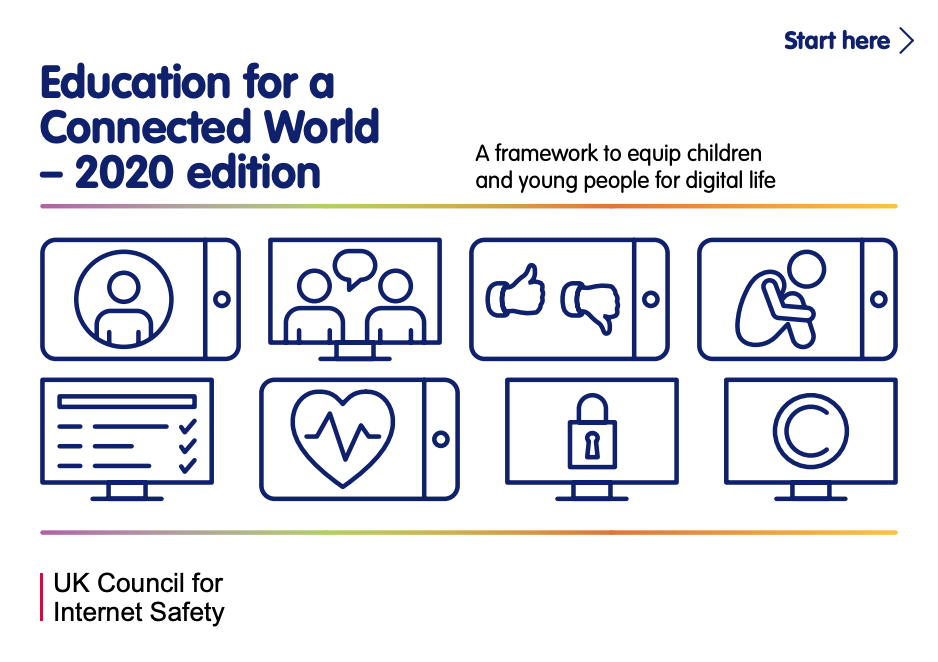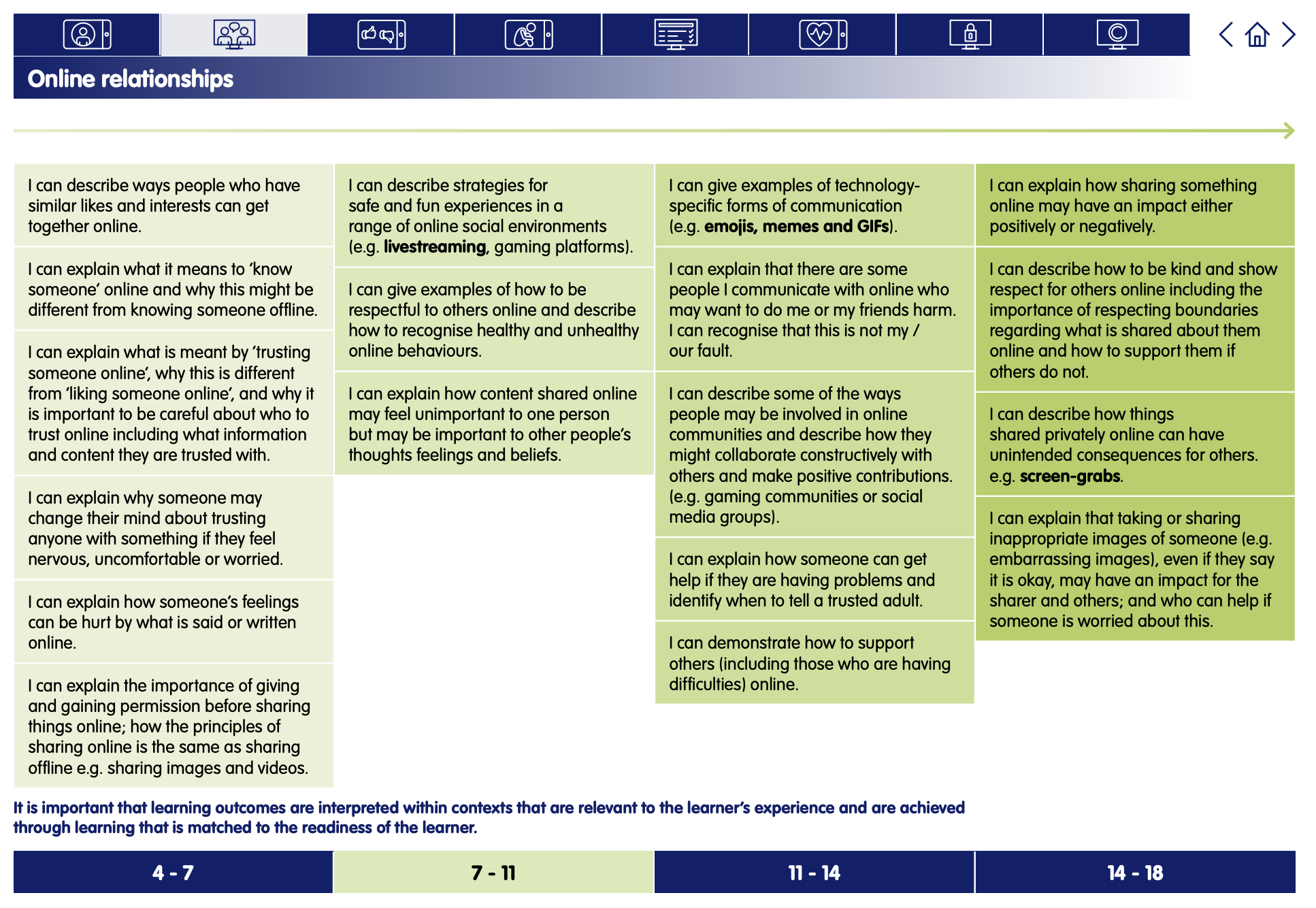Our Digital Citizenship Pledge
Digital Literacy and Online Safety (Y4) - Lesson 4
A note about this lesson

This lesson is taken from Common Sense Education’s excellent Digital Citizenship curriculum. Their resources are shared for free under A Creative Commons Attribution- NonCommercial- NoDerivatives 4.0 International License.
You can find the original resources HERE.
Objectives
- Define what a community is, both in person and online.
- Explain how having norms helps people in a community achieve their goals.
- Create and pledge to adhere to shared norms for being in an online community.
Lesson 1 - Your Rings of Responsibility
Lesson 2 - Password Power-Up
Lesson 3 - This Is Me
Lesson 4 - Our Digital Citizenship Pledge
Lesson 5 - The Power of Words
Lesson 6 - Is Seeing Believing?
Links to Education for a Connected World.
This lesson from Common Sense Media's Digital Citizenship curriculum links to the following strands from the Online Reputations section of the Education for a Connected World framework.
Introduction - What Makes a Strong Community?
Belonging to various communities is important for kids' development. But some online communities can be healthier than others. Show your students how they can strengthen both online and in-person communities by creating norms that everyone pledges to uphold.
Ask: How would you describe the people where you live? Do most people know each other? Take turns sharing your idea with your partner. (Slide 4)
Invite students to share. If necessary, explain that where they live is a type of "community." It's their "neighbourhood community."
Invite a student to volunteer to read aloud the definition of community: a group of people who share the same interests or goals. Ask: Another community that you are a part of is this classroom. Using our definition, what makes this class a community? (Slide 5)
Invite two to three students to share with the class. Emphasise that a classroom is a community because students all have something in common (similar age and grade) and they all have a similar goal (to learn).
Project the images of two different classrooms on Slide 6 and ask: Which classroom community would best reach everyone's shared goal of learning?
Give students a minute to view the images. Then invite students to explain their answers.
Point to the second image and say: All the students in this classroom community have agreed to act in a certain way. These are called norms. Norms are ways of acting that everyone in a community agrees to. Norms help people in the community work toward their shared goals.
Ask: What are some norms that we all follow in this class? Take turns sharing your ideas with your partner.
Invite students to share their responses aloud with the class. As students provide specific examples of classroom norms, capture three to five of them on Slide 7.
Evaluate - Online Community Norms
Say: Norms are also important for online communities. There are different types of online communities and, depending on their goals, they might have different norms that members are expected to follow.
Distribute the Online Community Norms Student Handout to each student (see the Teacher Version of the handout for reference). Read the directions aloud. (Slide 8)
Allow students five minutes to complete the handout. Then invite students to share their responses.
Create - Group Pledge
Assemble groups of four or five students and distribute the Group Pledge Student Handout to each group.
Say: Knowing how to follow the norms of an online community is important because it's part of being a good digital citizen. A digital citizen is someone who uses technology responsibly to learn, create, and participate. That means you get the rewards of being online -- like seeing cool videos and playing fun games -- without the negatives like people being mean or disrespectful to the community. (Slide 9)
Remind students that a pledge is a promise or an oath that a person makes.
Assign each group one of these four categories: share, respond, work, or play. It's OK if multiple groups work on the same category. Read the handout directions to students. (Slide 10)
Give students five minutes to agree on a norm and add it to their handout. As they work, circulate to provide support to any groups struggling to agree on a norm. Encourage students to go beyond "being nice" by coming up with specific examples, such as:

Plenary - Classroom Poster
Invite each group, one at a time, to come to the front of the room. Have one student from the group write the norm on the Digital Citizenship Pledge Poster, while another reads it aloud to the class. Have each person in the group sign the poster. Ask them to explain why they chose the norm that they did.
Display the poster in the classroom and refer to it when engaging in online activities. (Check out our additional digital citizenship Classroom Posters.)
Collect the group pledge handouts.
Have students complete the Lesson Quiz. Send home the Family Activity and Family Tips.
Extension Activity:
Have students create a digital poster of their pledge using Canva or other great apps and websites for making posters. You can link to them from your classroom webpage.


